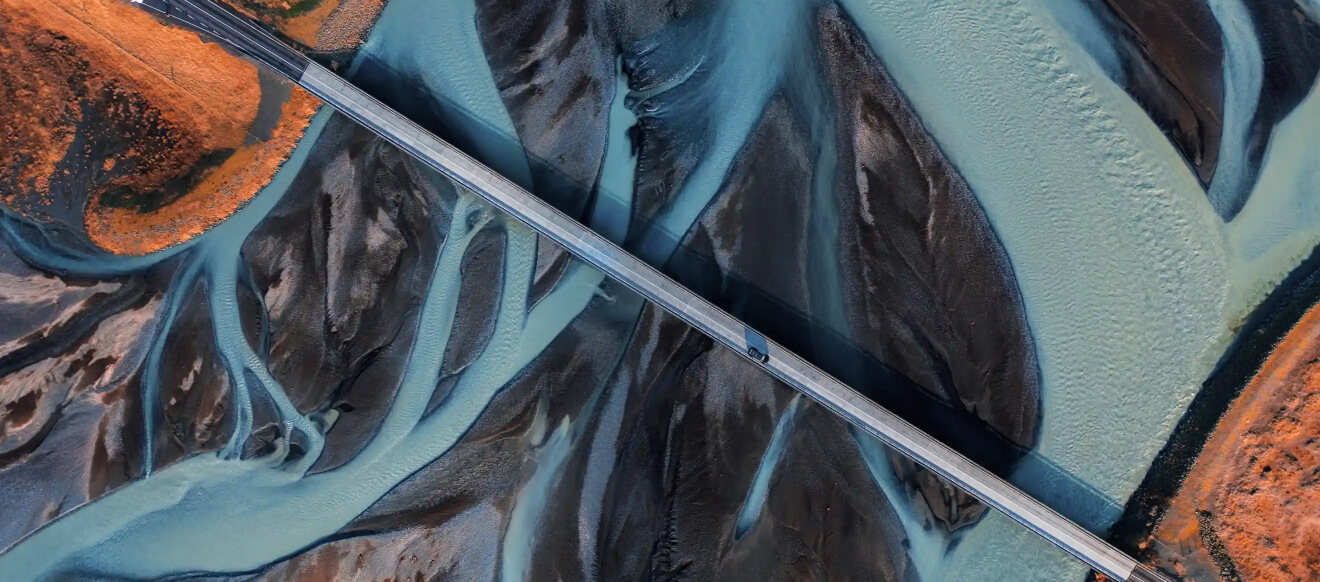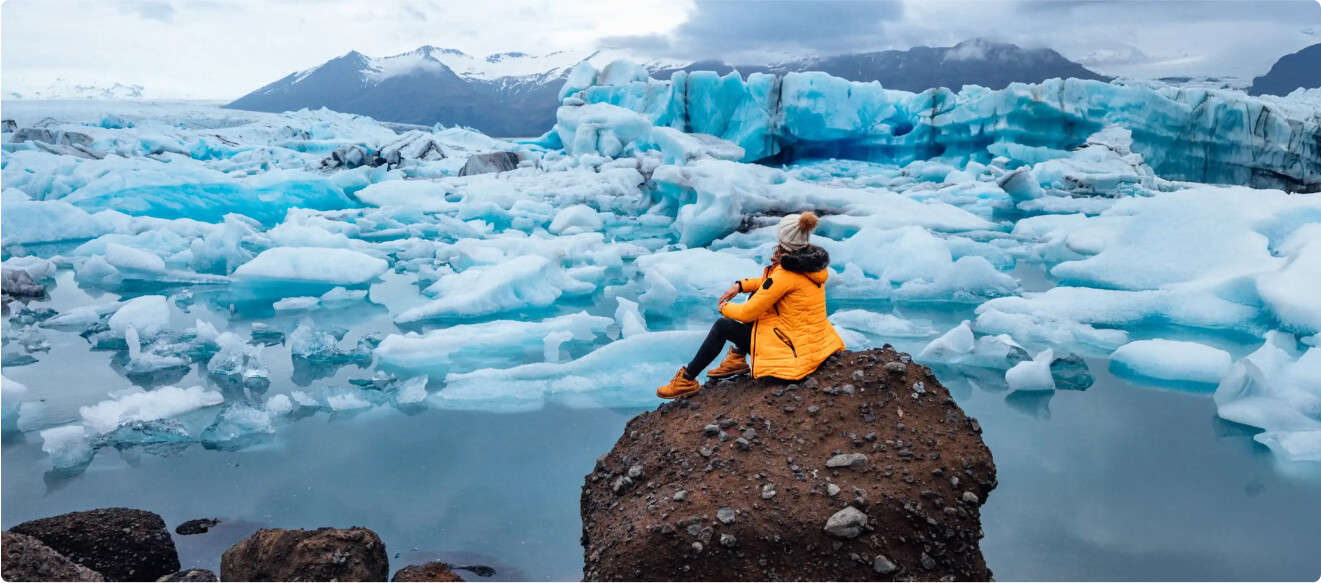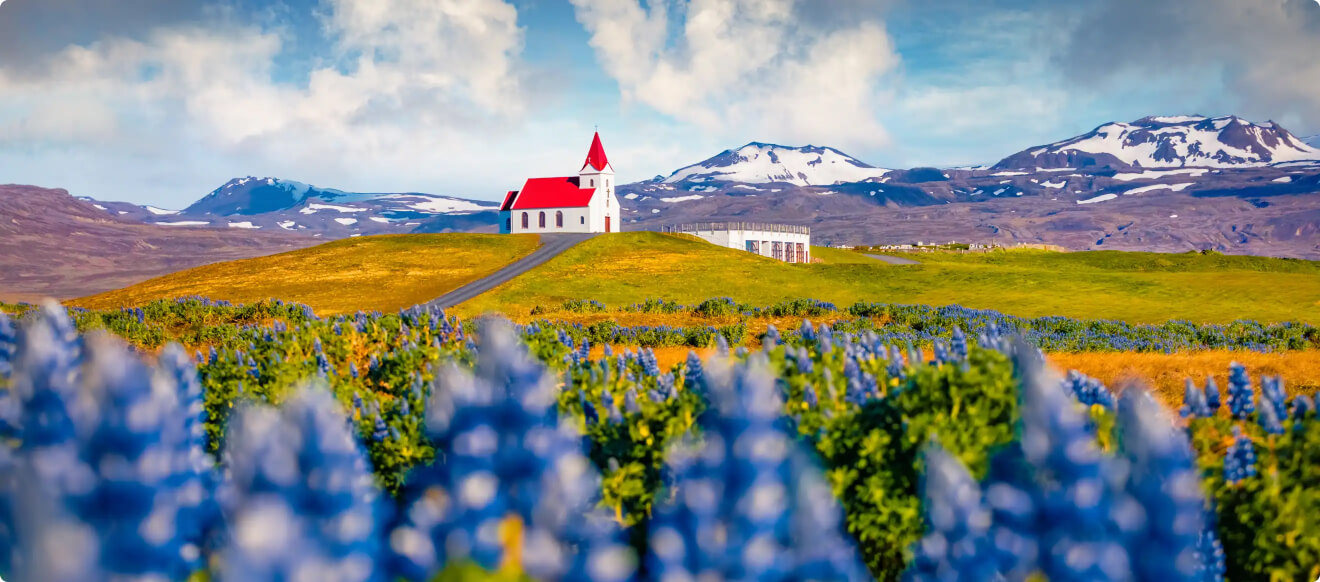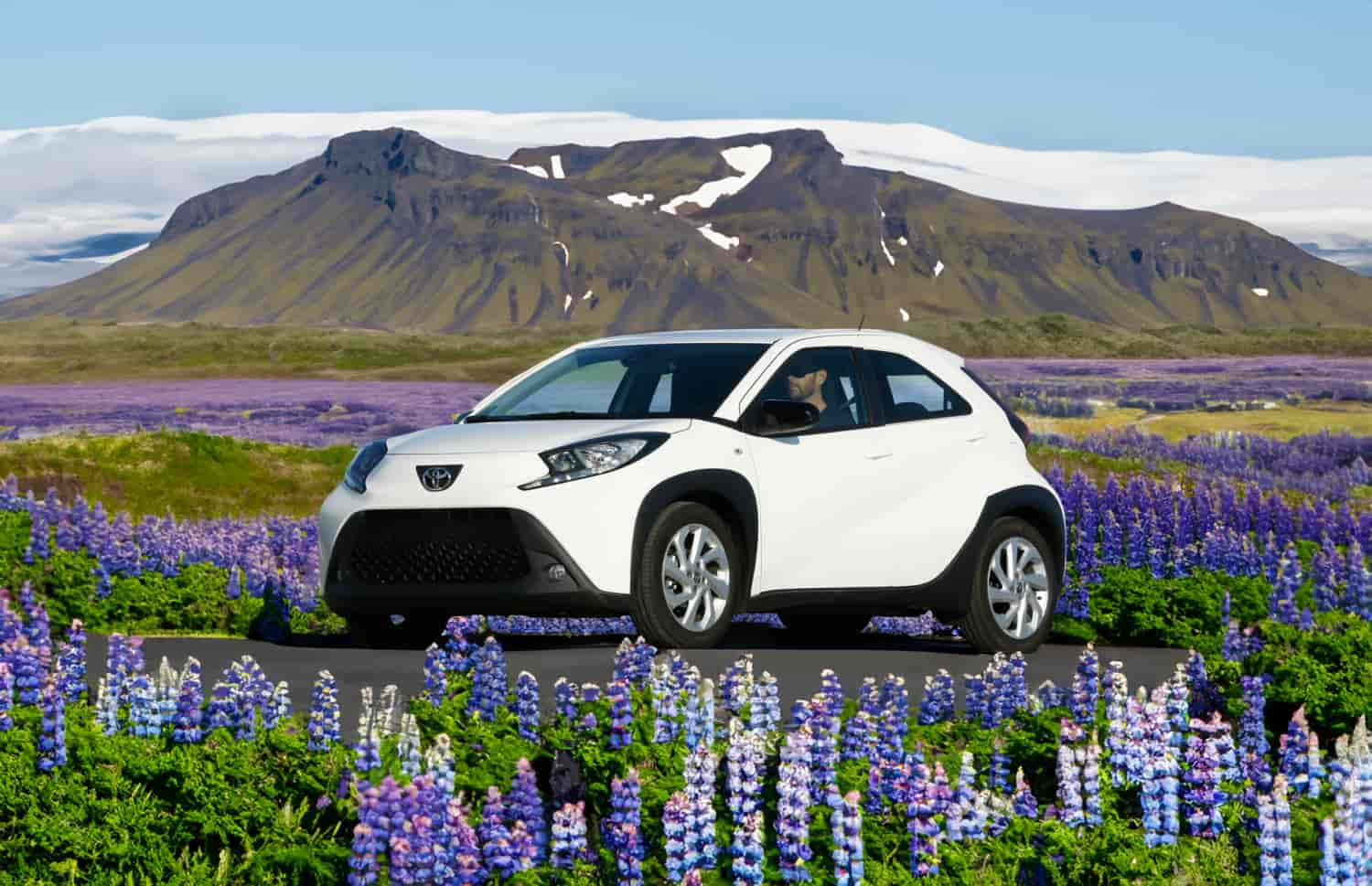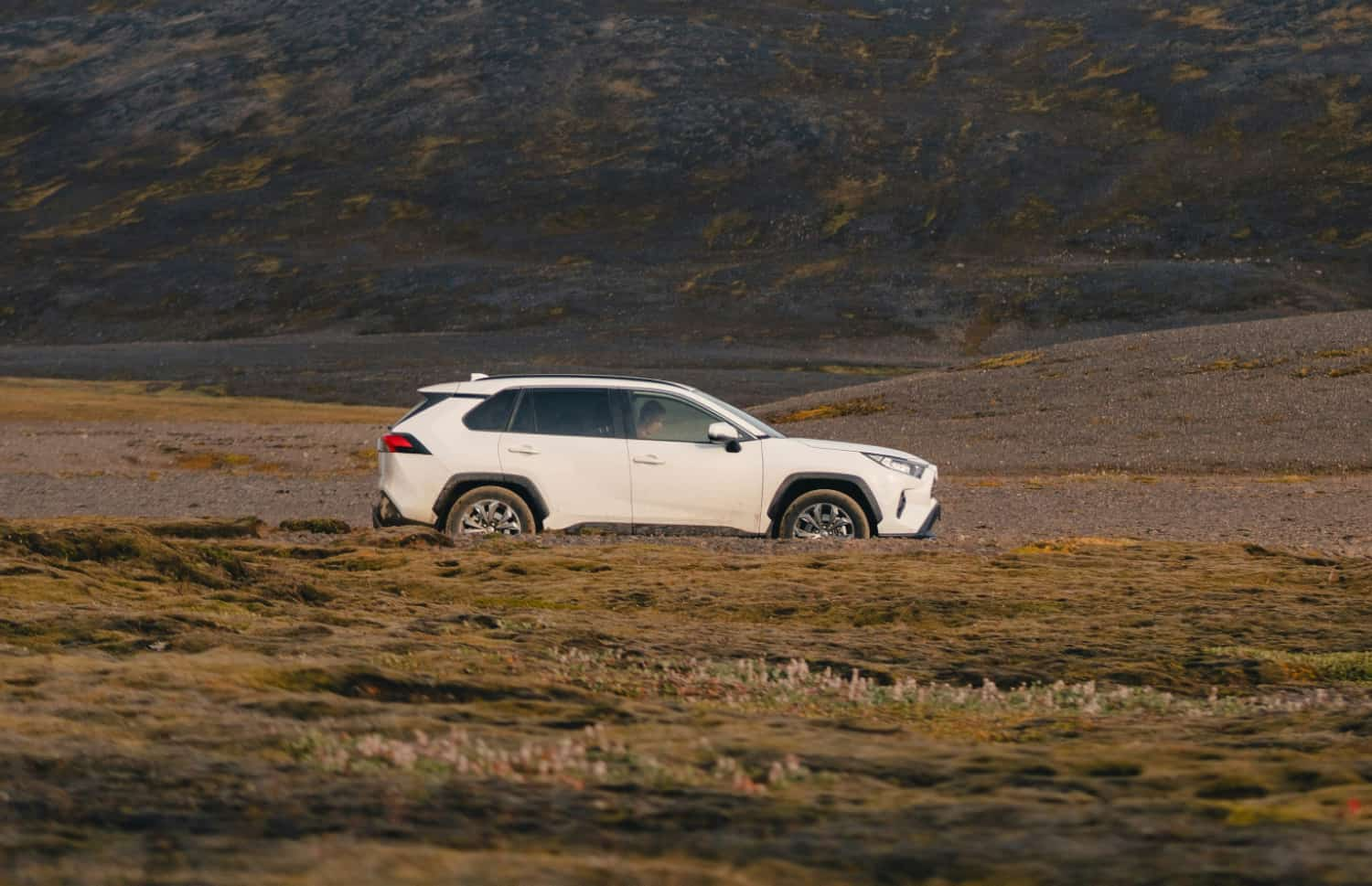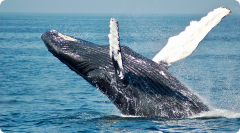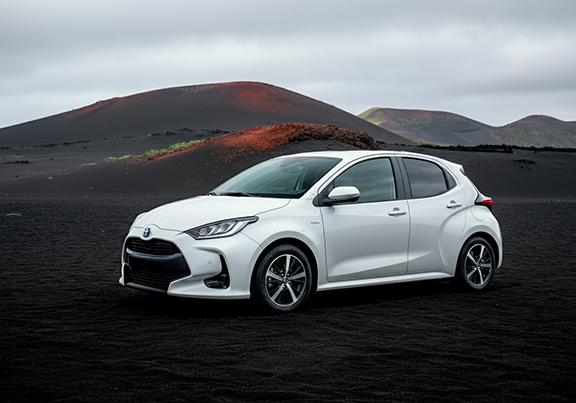If you’re visiting Iceland in May, you’ll be coming to the island in mid-spring (even though it may not be the type of spring you’re used to back home). May in Iceland actually holds a lot of benefits for visitors.
So, if you’ve been wondering whether you should be traveling to Iceland in May or you’re already busy planning your trip itinerary, this article is for you. We give you the full lowdown – from the weather to what to pack and everything there is to do.
Is May a Good Time to Visit Iceland?
Even though we consider May to be one of the best months to visit the island, May may not (we couldn’t resist) be the right fit for you based on certain criteria. That’s why we’ve created this handy overview of pros and cons, so you can scan through some of the month’s highlights and downfalls:
Pros
-
The weather is much milder than during the past couple of months (it is spring in Iceland after all), and the temperatures are steadily climbing.
-
Daylight hours have drastically increased from the mere 4 hours experienced only a couple of months ago. All these daylight hours make a jam-packed trip itinerary possible.
-
The road conditions have drastically improved. You no longer need to worry about getting stuck in the snow or skidding across icy patches. Not only does it make daily driving easier, but it also makes it much easier to plan and take on those island road trips.
-
As a shoulder month, May has a lot of the perks of peak season, but without the peak season crowds you’d see during August in Iceland.
-
No peak season, no peak season prices. That means that your Iceland in May vacay budget will be able to stretch much further than during our peak season summer months.
-
If you consider yourself a nature lover, you’ll be glad to know that you won’t be the only visitor arriving in May. This is also the month that we welcome the Puffins to the island.
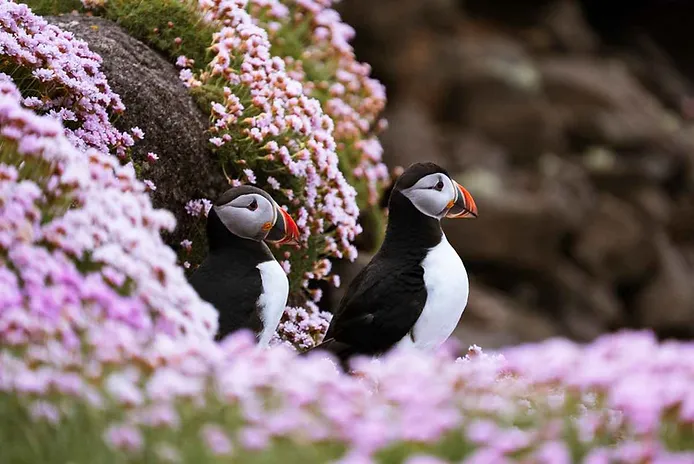
Cons
-
As we already mentioned, it’s not peak season yet. That means that operating hours might still be according to the “down” season. This can include anything from public transport to attractions, so you’ll need to double-check times to ensure that you don’t arrive at a closed door.
-
May is that one month in the year when you’re unlikely to experience any of the natural phenomena Iceland is known for. The daylight hours are still too few to experience a Midnight Sun. You’ll need to wait for June in Iceland to experience that phenomena.
-
The daylight is already too much to spot the Northern Lights.
-
The tricky road conditions of the colder months might be a thing of the past. However, many of the roads and routes that are closed during the colder months each year have still not reopened. This can make a road trip much harder to plan – especially if you have your heart set on exploring the Westfjords and the Highlands.
The Weather in Iceland in May
One of the biggest perks is the Iceland temperature in May. The temperatures will no longer be plunging below that 0-degree mark! You can look forward to temperatures ranging between 4 and 10 degrees Celsius, and hovering around 6 degrees the majority of the time.
The overall Iceland climate in May is also much milder than the past winter months. However, the weather it is not yet as stable as summer in Iceland. Still, the extreme Iceland winds have seemed to calm down a bit and the large amounts of snow and rainfall have also retreated for a while.
If you think Reykjavík in May is warmer than the city's outskirts, we’re going to have to burst your bubble. This is a myth that is based on an illusion. City buildings provide shelter from the weather elements. That is what makes it feel slightly warmer inside Reykjavík compared to outside its borders.
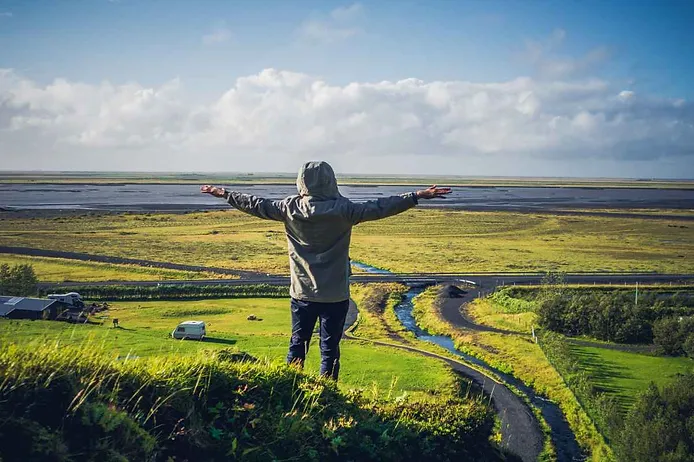
This is also not a phenomenon that’s exclusive to the capital city, and is experienced in any of the larger cities and towns on the island. In May, Iceland has long daylight hours with up to 18 to 20 hours of daylight each day, making it less likely to see the Northern Lights.
So, in short, the answer to the question “can you see the Northern Lights in Iceland in May?” is that you need actual darkness to see lights, and the warmer weather also doesn’t help the situation.
What to Pack and Wear when Visiting Iceland in May
Spring season in Iceland doesn’t equate to floral dresses and tank tops, so, understandably, it might be confusing to pack for a trip to Iceland in May.
As we mentioned before, temperatures are much milder, yet, the weather conditions are still unpredictable. There is always a chance of rain, so it’s best to pack layers and waterproof clothing. In addition to warm clothes, you should pack comfortable, waterproof walking shoes, gloves, hats, and a scarf to stay warm and dry.
Likewise, May offers the opportunity to enjoy Iceland’s geothermal pools and hot springs. So, don’t forget to pack a bathing suit and a towel. If you plan to visit any public pools, be sure to pack flip-flops, as they are often required.
Don’t forget to bring your camera! These changing weather patters can create stunning photo opportunities. Do check the weather forecast regularly and adjust your outfit accordingly to ensure an enjoyable trip.
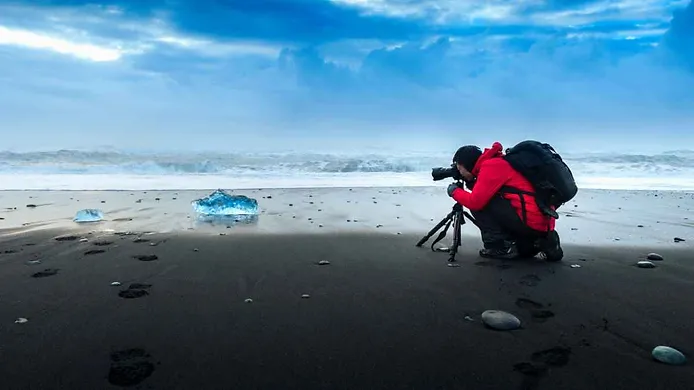
We’ve created a comprehensive packing list for Iceland to help you prepare for your adventure. Check it out and make sure you have everything you need to have a comfortable stay this spring!
The Best Things to do in Iceland in May
Are you still wondering what to do in Iceland in May? Well, take a look at our recommendations below, and you might find a few things to add to your trip itinerary:
Go on a Road Trip
Top priority in May should be visiting the Westfjords; other attractions can be included on a road trip around Iceland. We strongly believe that there is no better way to explore the island, and May brings the change in the weather that’s needed to make this possible.
The snow is gone, and the ice has thawed, so you no longer need to take a Valium in order to take on the roads in Iceland. Still, there are a couple of things to bear in mind when driving in Iceland. Some of the roads and routes might still be closed, so you’ll just need to take this into account when planning out your road trip route. Other roads, such as F-Roads, require a 4x4 vehicle by law. Some of the most popular routes include:
-
The Diamond Circle
-
The Golden Circle
-
The Ring Road
-
The South Coast Way
-
The Westfjords Way
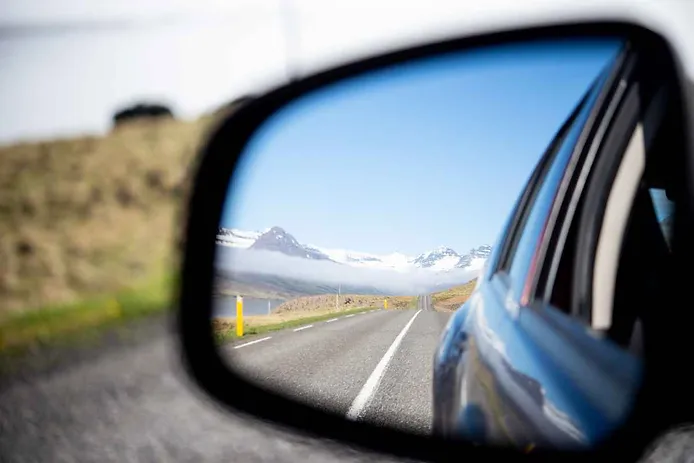
Take a Hike
With the breathtaking scenery that can be found in Iceland, it’s no surprise that the country boasts a considerable number of hiking trails. Hiking in Iceland offers breathtaking views of glaciers, waterfalls, volcanoes, and hot springs.
You don’t need to be a fitness pro or regular hiker to enjoy a hike here on the island. Our trails range in difficulty level as well as length, meaning that you can take on an easy day hike or a more challenging multi-day trek. If this sounds like something you might be interested in doing, these are a few hiking trails you can consider:
-
Glymur Waterfall Trail
-
Mt. Esja Trail
-
The Hornstrandir Trek
-
Laugavegur Trek
-
The Landmannalaugar Trails
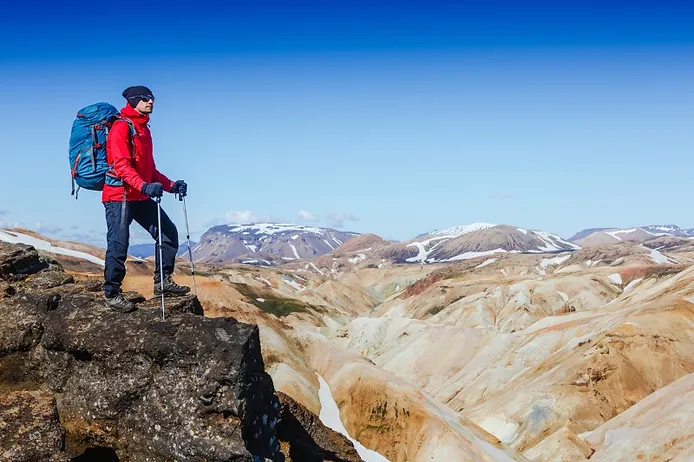
Go Camping
Whether you’re going hiking or would just like to immerse yourself in the Icelandic landscape, camping is a great way to do that. It’s also a great way to cut down on accommodation costs.
If you would like to add to your savings, you can buy a Camping Card. It will give a family of 2 adults and 4 children access to various campsites across the country for 28 nights. To put these savings into perspective; campgrounds generally charge between $10-$20 per person per night.
If camping in Iceland sounds like something you’ll consider, the following campsites come highly recommended:
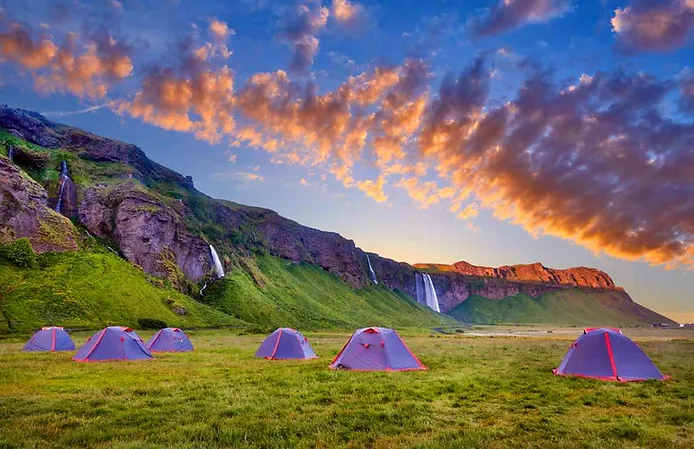
Visit Our Waterfalls
To visit all the waterfalls on the island will be quite a feat since we have over 10,000 of them! Some have unique characteristics that should definitely make it on your Iceland to-do list. These include:
-
Seljalandsfoss – where you can walk behind the falls and take a photo of the Iceland landscape through a veil of water.
-
Svartifoss – a waterfall with a dramatic black basalt column backdrop that served as inspiration for Hallgrimskirkja.
-
Dettifoss – the waterfall that has earned itself the official title of the most powerful waterfall in Europe.
-
Godafoss – where it is believed a symbolic gesture was made to signify the official conversion of the island to Christianity.
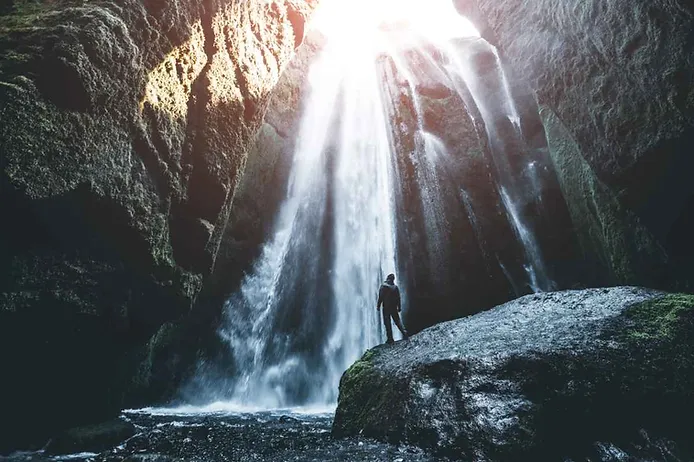
Eat, Drink, and Explore the Capital City
This is pretty much what the Reykjavík Food Walk is all about. If you book a spot on this tour, you’ll be guided through Reykjavík. Your guide will tell you everything you need to know about the city. Now, with the added bonus of stopping at various venues for some local Icelandic food, Reykjavík street food, and craft beers.
These tours are not big groups. So, except for the fact that your stomach will thank you, these tours are great for solo travelers to make friends while enjoying good food.
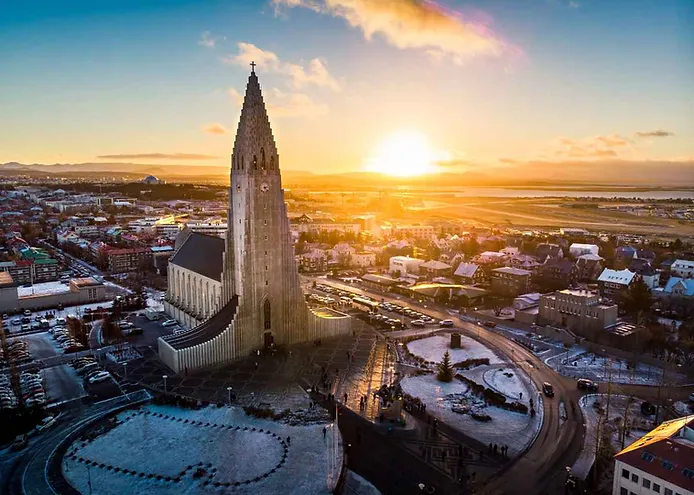
Take a Dip in a Hot Spring
Iceland isn’t called the Land of Fire and Ice for nothing, and our hot springs are a reminder of that. Due to all the volcanic activity here on the island, our underground water supply gets heated up. In some places, the heated water reaches the earth’s surface and can be used as is. In other words, it’s safe to soak in what looks like a rock pool without the fear of becoming Kentucky Fried Human.
In other places, the water is hard to access or simply too hot to use in its natural form. In these instances, the water is utilized in commercial geothermal pools that are open to the public. Whichever form you prefer your hot spring in, you can’t visit Iceland in May without at least one relaxing soak. These are a few of the hot spring hot spots here on the island:
-
The Blue Lagoon
-
Kvika Footbath
-
Hrunalaug
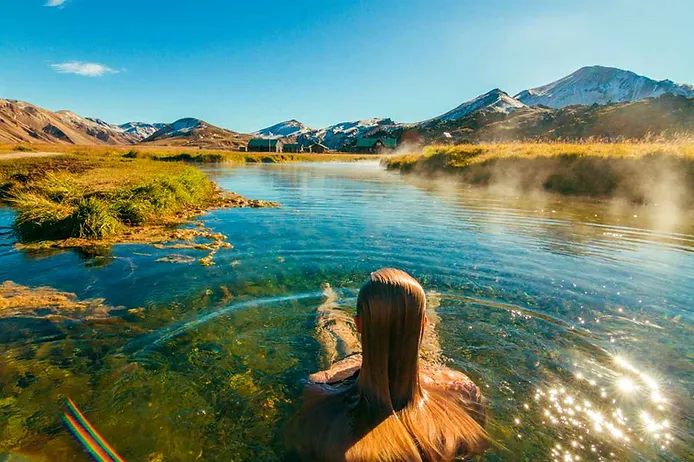
Visit Our National Parks
Except for the breathtaking scenery, the national parks in Iceland each have different attractions to enjoy. Currently, we have 3 official national parks; Vatnajökull, Snæfellsjökull and Thingvellir.
Thingvellir National Park is usually the first stop for those who are on a Golden Circle road trip. And, in the case of Vatnajökull, it keeps growing larger and larger as other reserves are added to it.

Ride a Snowmobile Across a Glacier
Okay, so this is not the only way of exploring the Iceland glaciers, but it sure is an exciting one. You'll ride across the stunning glacial landscapes of Iceland and explore otherworldly ice caves and glacial lagoons. Likewise, you’ll learn about the history and geology of the region from experienced guides.
Just remember that this is not a situation of borrowing a snowmobile and start cruising around on glaciers. There are serious safety concerns when taking on these icy landscapes. That’s why these activities are offered in a guided tour setting.
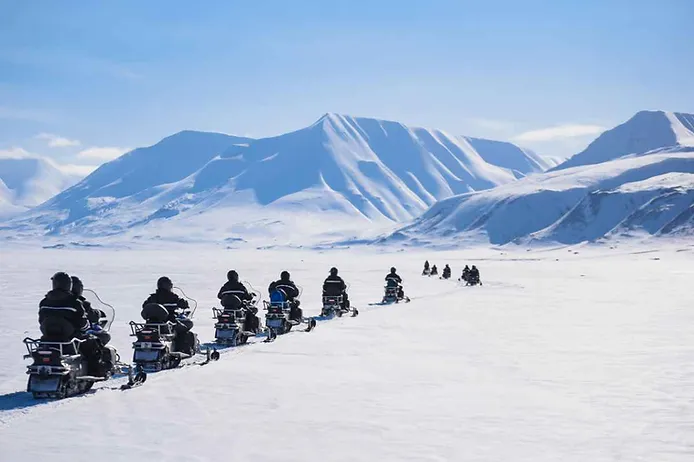
Dive or Snorkel the Silfra Fissure
Diving or snorkeling the Silfra Fissure is truly a once-in-a-lifetime experience. The Silfra Fissure is a tear (fissure) in the earth where the Eurasian and North American tectonic plates push away from each other. This tear is now filled with the clearest glacial water.
This not only allows you to see 120 meters in whichever direction, but you can also literally lie suspended between two continents. The snorkeling option is available to anyone, irrespective of skill or experience. But if you want to dive the Silfra you will need to bring along a valid diving license and have the relevant experience under your (diving) belt.
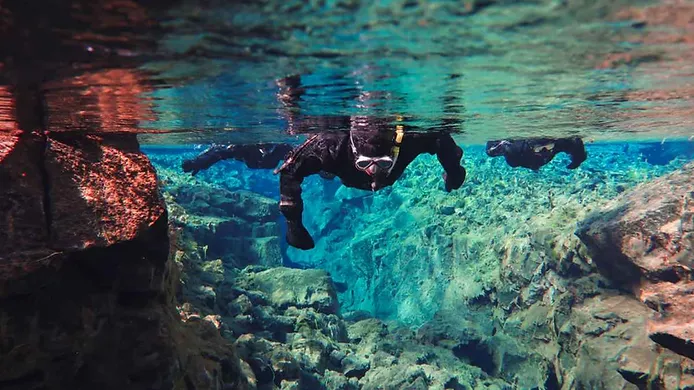
Ride an Icelandic Horse
If you are eager to explore the country's stunning landscapes, then horse riding in Iceland is the perfect activity for you. And no, this is not just any horse in Iceland, it is an actual breed of horse authentic to the island called the Icelandic Horse. Galloping across the Iceland landscape on one of these creatures is an experience you won’t soon forget.
They have the most wonderful and friendly nature and look more like ponies than full-grown horses. During the winter season, they also appear to be quite fluffy due to their thick winter coats and they are well-known for their fifth gait called the tölt.
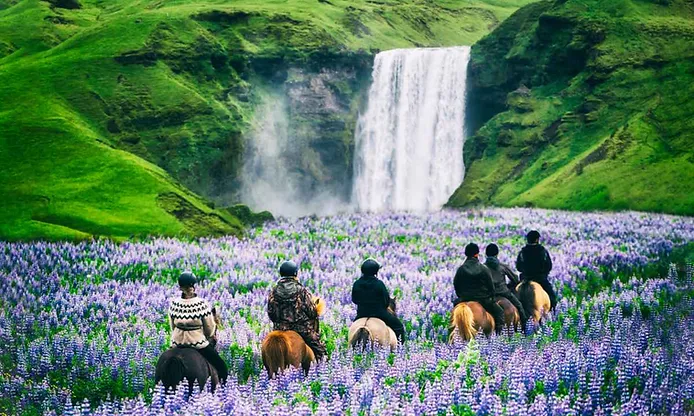
Become a Viking
No, we’re not telling you to start raiding the stores in Laugavegur Street. There are plenty of opportunities to truly immerse yourself in the Viking lifestyle here on the island. You can choose to go sailing on an authentic Viking ship in the Westfjords.
Or you can turn yourself into a Viking at Mink Studios with the traditional garb, accessories, and even weapons. Then, you can have your portrait taken by one of the most renowned photographers on the island. Alternatively, you can visit an authentic Viking village, join in on an authentic Viking feast, and even sleep in a Viking-themed hotel!

Visit Our Exciting Museums
If there’s one thing Iceland doesn’t do, it’s boring museums. Our museums have rides, are interactive, tell stories of heroes and all sorts of mythical creatures, and ask you to participate in the fun. Whatever your interest, we’re sure you’ll find a museum that’s to your liking.
Many interesting museums are located on the island. And while people often save museum visits for rainy days, there are so many that you might want to dedicate a few days to exploring them properly. Here are a few to consider adding to your trip itinerary when you’re in Iceland in May:

Icelandic Festivals and Events in May
As things start warming up in the country, you’ll also find the social calendars heating up with all sorts of music festivals and events. Here are a few that you can attend during your trip to Iceland in May:
The Reykjavík Arts Festival
The Reykjavík Arts Festival is a celebration of every art discipline under the sun. During the festival, you can see art exhibitions, live performances, and much, much more in various venues all across the capital city. This is one of Iceland’s oldest running festivals, having been started in 1970. And if you appreciate art, it’s definitely not to be missed whilst in Iceland in May.
The Reykjavík Peace Festival
The Reykjavík Peace Festival is completely free of charge and is a sort of ode to John Lennon and his ideals. The festival is marked by the lighting of the peace tower and live music in the form of choirs.
The Midnight Sun Salsa
Salsa is probably the last thing you’ll associate Iceland with, yet this is exactly what you’ll get during the Midnight Sun Salsa. The Midnight Sun Salsa Festival is a celebration of Latin dance held across Reykjavík, similar to the Reykjavík Art Festival. So, when you’re visiting Iceland in May you can come and dance the night away!

Iceland in May; a Time the Island Comes to Life
After the winter with all its harsh weather elements, the excitement is palpable when spring arrives here on the island. And by May, temperatures are only on the rise, daylight hours are skyrocketing and there are more and more things to see and do in Iceland every day.
So, why not rent a car in Iceland and start ticking off some of the experiences mentioned in our article? Your Iceland spring adventure awaits!










